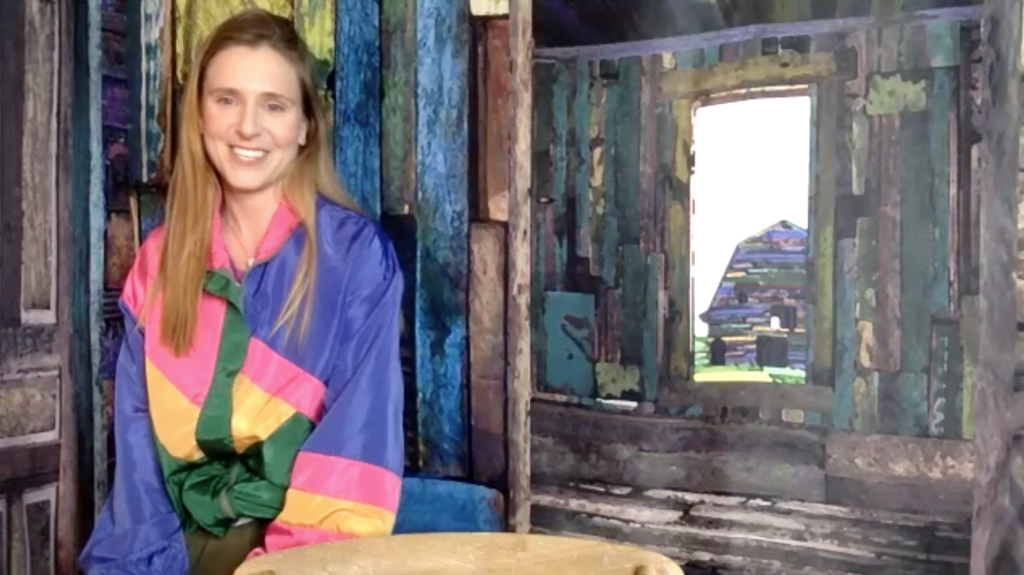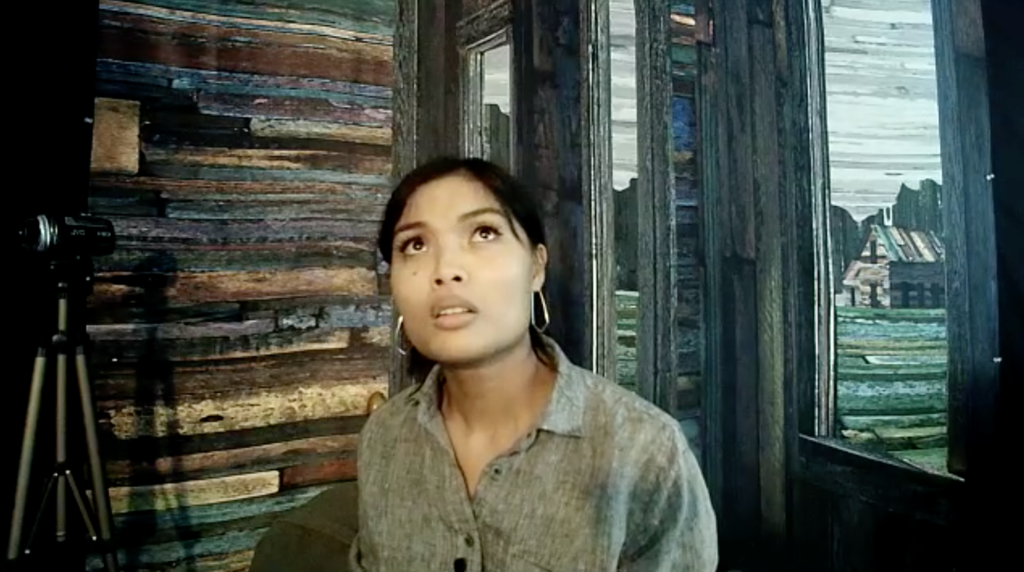Peculiar yet approachable, alternating between effulgent and piercing, complex and elucidating, Audrey Cefaly’s play Alabaster on paper, at first glance, might not be the ideal candidate for a filmed theatrical production, especially as part of the National New Play Network’s Rolling World Premiere program. Alabaster’s intricately woven elaborate character textures make for ideal stage pyrotechnics in a live theatrical production. The robust magnitude of kinetics practically leap off the page of Cefaly’s script.
But, the Salt Lake Acting Company (SLAC) has risen phenomenally to the challenge, its first digital production rendered with the elements of a theatrical design team which normally would be tasked with giving the play its Utah premiere on a stage with a full array of sets, costumes, props and lighting. Even more remarkable is that all four of the play’s characters remained in their respective homes as their performances were filmed, along with having all appropriate stage production properties shipped and installed in their residences.

Directed by Martine Kei Green-Rogers, the production illuminates an outstanding rendering, with sharp portrayals, of Cefaly’s play. The production is available, with purchased tickets, on demand through May 30.
Starting before the pandemic shut down live productions last year, Cefaly’s play has been part of a 10-city rolling world premiere, coordinated with the National New Play Network (NNPN), the largest such premiere ever for a NNPN work. Cefaly, an Alabama native who now works in the D.C. metropolitan area, sets the story, told in dark comedic tones, with an all-female cast in a northern Alabama town where a killer tornado took the lives of family members of a woman, June. To cope with the tragedy and the PTSD effects of a vicious storm, June has taken to creating primitive style paintings on canvases that are wood pieces she has recovered from the storm.
Enter Alice, who has traveled from the north, a photographer who is seeking subjects for a collection of stories featuring women whose traumatic experiences are etched in scars on their skin. When Alice meets June, their first meeting verges on a no-holds-barred state of emotional combat. June might seem relieved to have real human contact after the catastrophic loss of her family but she also steels her defenses against a woman she suspects of potentially exploiting her misery and grief for the purposes of her own artistic expression. The other two characters in the play are goats. One is Weezy, a straight-talking popcorn gobbling and drinking character, who provides a good deal of the tempered comedic relief in the drama but who also is the piercing inquisitor, challenging June to reconcile her inner conflicts of conscience and soul. Weezy intuits the spectrum of vulnerabilities, which have paralyzed June. Meanwhile, Bib, an old goat who sleeps fitfully and frequently bleats, baas and makes other gruff sounds, seems miraculously transcendent. Somehow, this frail elderly animal survived a great natural disaster but also is nearing the end of her own life.

In general, American society handles grief awkwardly and unsatisfactorily. Social media outlets also have made it far too easy for people to engage collectively in grief with boilerplate messages of condolences and emojis that become shortcuts for many uncomfortably struggling to articulate genuine sentiments of sympathy but also, more importantly, empathy. As admirable as it is to counsel one in mourning about how they might proceed in their own life, the challenge requires much more effort in empathetic patience to support someone to find their own way of making their life bearable even as the memories of profound loss and tragedy always will be present.
Cefaly’s play builds upon a lucid irony. Alice interviews June with the dispassionate demeanor of a photojournalist. Living in the parts of the farm that survived the storm, June turns the table, peppering Alice with probing questions, based on her own research of Alice’s background. June’s questions rattle Alice to the point that the photographer might leave for good. When June exposes her back revealing the scars left by the storm (a vivid representation created by Kelly Donahue, the makeup artist who worked through an onsite assistant to apply the ideal effect), it sets up the tense momentum as June probes Alice to reveal her own scars. Despite strenuous efforts to keep it shielded, Alice, who is gay, is processing her own grief after losing her partner and their unborn child she was carrying in an accident. Alice’s defenses are not as impressively fitted as those June has assembled.
The play’s visuals on film are satisfying. Each actor appears as if they are in their own miniature theater. The sound design heightens the triggers of trauma for June. Among the notable scenes is when a severe thunderstorm returns June to the fears of that awful night and Alice shows up to comfort her, the first inkling of a connection between the two women. As the connection warms between the two women, Weezy compels June to think about her liberation from the limitations and wounds of Alabaster, a viable option now that the window has opened with Alice’s appearance. Meanwhile, in the surreal scene of Bib’s death, there is the transcendental acceptance of grief, an important foreshadowing moment for the central drama.

The acting ensemble, with each member making their SLAC debut, dominates the screen experience. Reanne Acasio (Alice) and Charlotte Munson (June) electrify their counterpoint throughout every scene. Tamiyka White rollicks and pulls no punches in her interpretation of Weezy while Catherine Doherty puts on a master class as the play’s other anthropomorphic character (Bib).
The production was filmed last month and editing was supervised by Kenny Riches, who joined the production through a partnership with the David Ross Fetzer Foundation for Emerging Artists (a/k/a The Davey Foundation). Others on the production team include Shawn Fisher, scene designer; Aaron Swenson, costumer designer; Jessica Greenberg, lighting designer; Jennifer Jackson, sound designer; Kelly Donahue, makeup artist; Justin Ivie, props designer andJennie Sant, stage manager.
Alabaster also is on the Kilroys’ The List 2019, which honors and advocates for gender parity and equity in the theatrical scene. Tickets are $20 per household and allow a 48-hour streaming window. For more information, see the SLAC website link.
